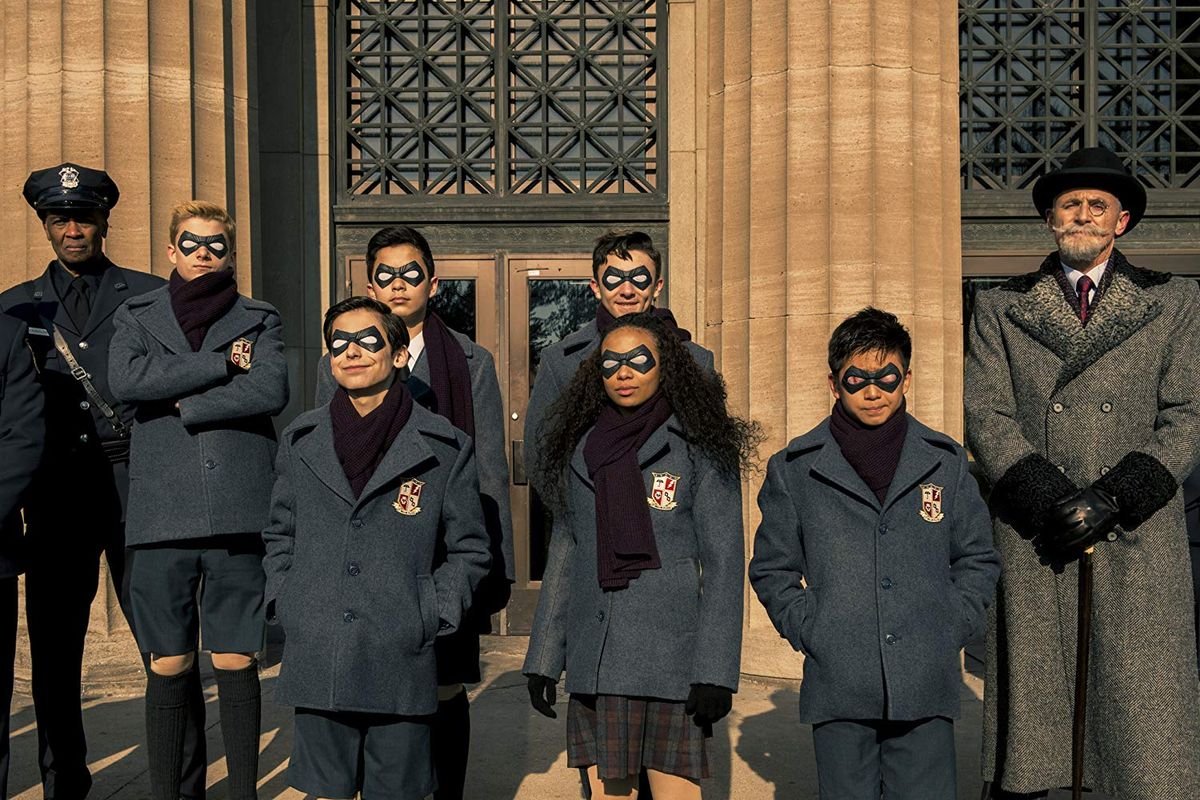Photo courtesy of Netflix.
On Friday, Feb. 15, Netflix released a new original series, “The Umbrella Academy,” based on a comic series of the same name. Created by My Chemical Romance frontrunner Gerard Way, the comic follows the adopted children of the eccentric Sir Reginald Hargreeves.
What separates this story from similar movies about the adoption of children by a strange man, like “Despicable Me,” is that all the children he adopts were born on the same day as 36 other children from women who weren’t pregnant until they spontaneously gave birth. Of the seven children he adopts, six have some sort of unique superpower. Instead of being the model of a perfect father, Hargreeves named his children numerically and used their powers as a way to stop crime – thus, the Umbrella Academy was created.
The series itself follows the lives of five remaining Hargreeves children – Vanya, Luther, Allison, Klaus and Diego – as they balance personal relationships, new emerging powers and the end of the world being only eight days away. Number Five, who has the ability to time travel, returns after being missing for almost 17 years in order to prevent the destruction of the world as they know it, thus beginning their adventure. Being only 10 episodes long, every single episode is jam-packed with action, heartfelt moments, comedic relief and an iconic soundtrack.
Fans can agree that although there were many perfectly done elements of the show, the real standout was the development and overall presence of Klaus, or Number Four. His character development is a type that is seldom seen on contemporary television. Simultaneously an uncontrollable drug addict, a war veteran suffering from PTSD and a man mourning over the loss of the love of his life while also remaining the source of comedic relief the entire time, it is easy to see why Klaus is such a fan favorite.
While both Klaus and Number Five are arguably the best members of the Hargreeves family, the other members of the family are hardly redeemable. Vanya, who is labeled as “ordinary,” is actually an over-trusting villain. Allison is a terrible mother who, even when the world is ending, doesn’t spend any time with her daughter, instead choosing to spend time pining over her adopted brother Luther, which in and of itself is taboo enough to make both of those characters unredeemable.
Luther, who shares the same feelings as Allison, spends the whole series brooding and crying over the fact that his father didn’t like him instead of actually solving any problems. The last member of the Hargreeves family, Diego, is the least memorable of the bunch. Overall, these “super” people turned out to be duds and inessential to the plot.
Beyond the development – or lack thereof – of the characters, the series missed the mark with some of their costume decisions. Luther, who turns out to be part chimpanzee, wears the most cringeworthy muscle suit throughout the entire series. Instead of looking like the tough, strong leader that he was supposed to be, he ended up looking more like a teddy bear.
Despite lackluster characters and costuming, “The Umbrella Academy” was truly successful. Unlike most superhero shows and movies we see today that are made by Marvel or DC as if they were on an assembly line, this show is carefully spread out and keeps fans’ eyes glued to the screen the whole time.
Season one ended on a cliffhanger, and in typical Netflix fashion, fans will most likely have to wait a year until the next season premieres. Hopefully, the many unanswered questions and plot holes will be acknowledged and the hype of the show can carry on to next season.








